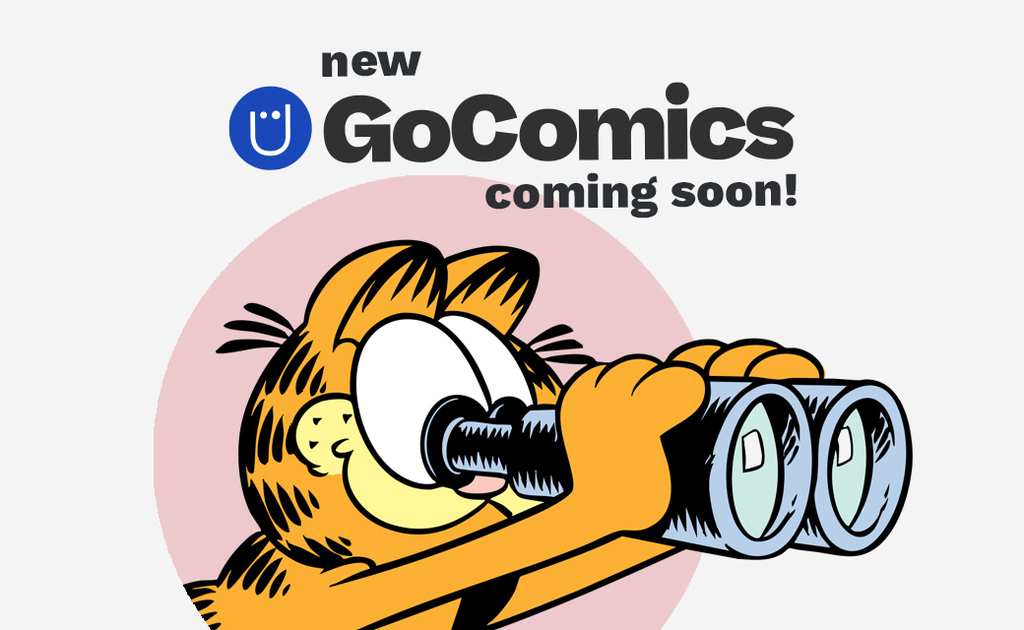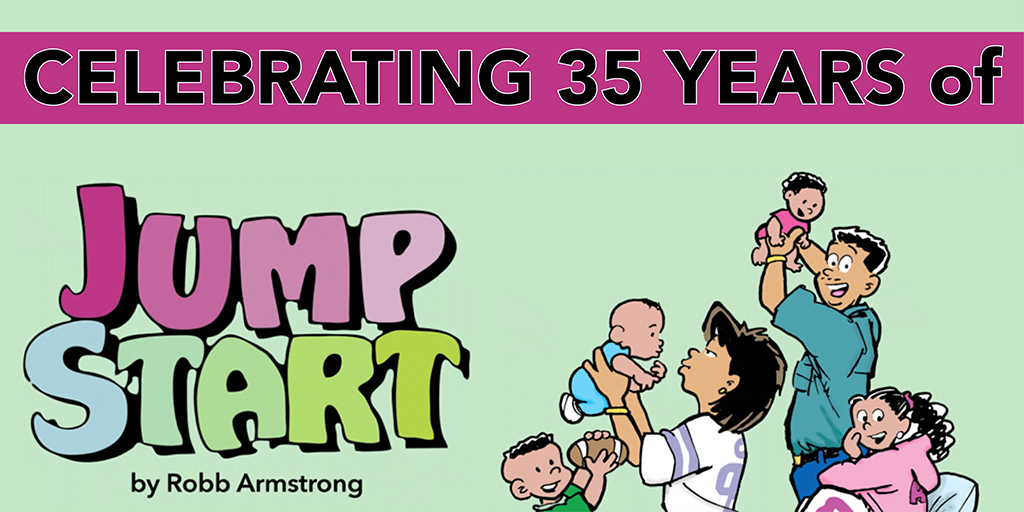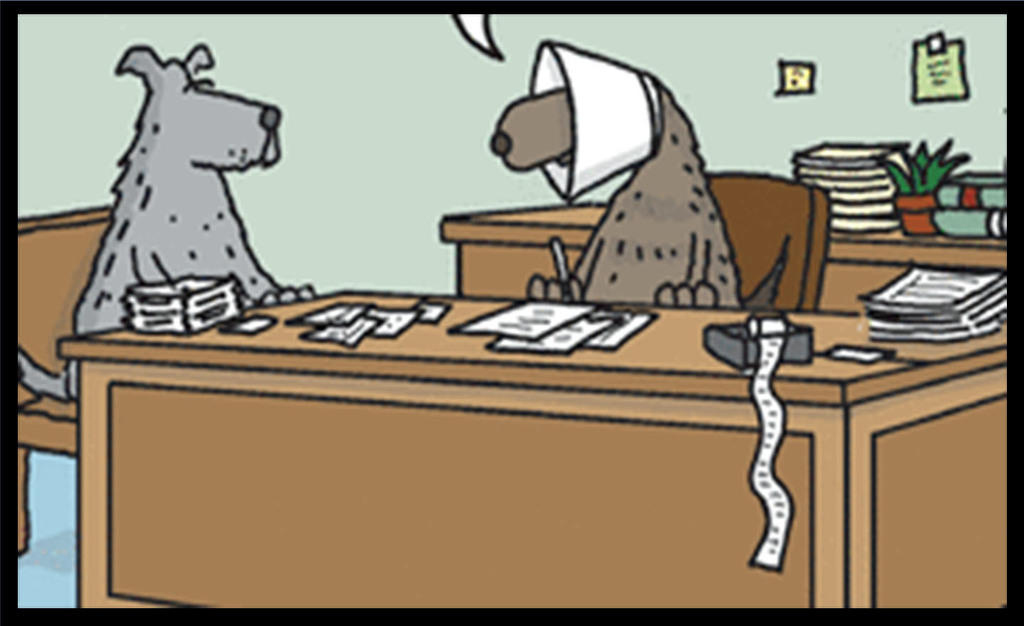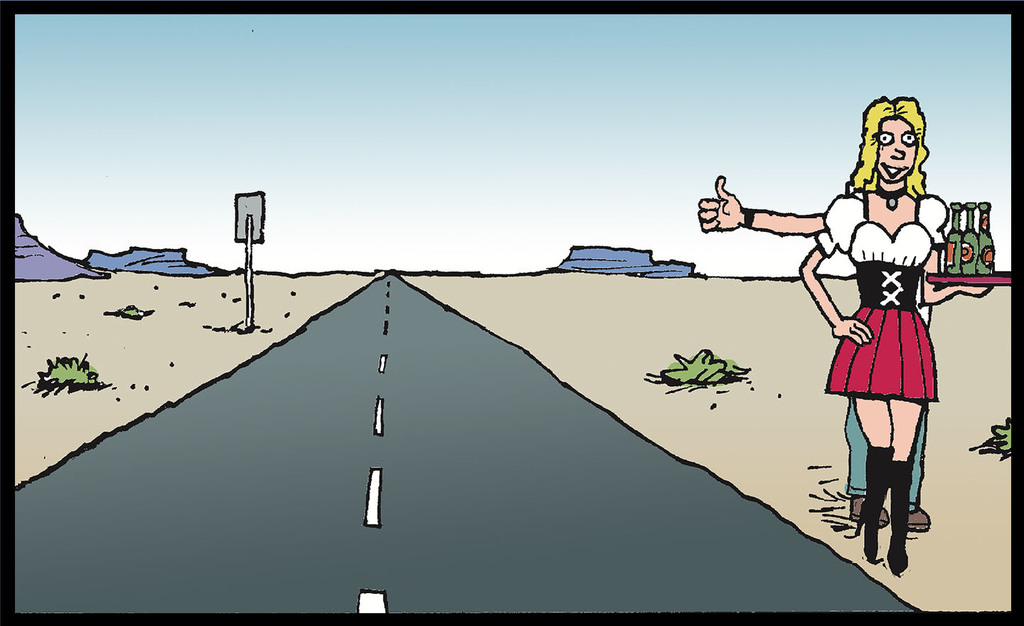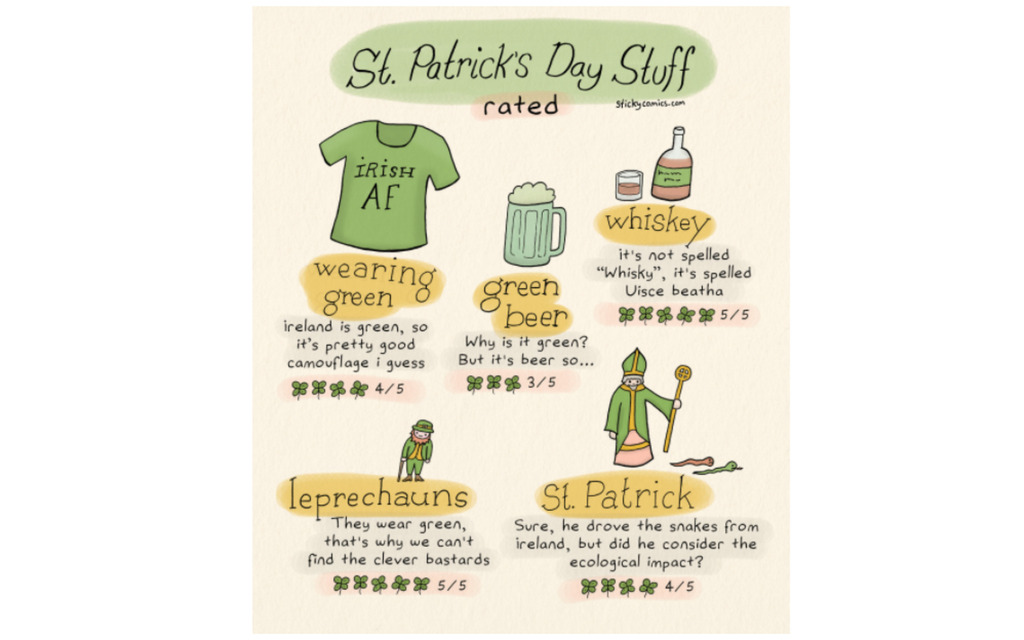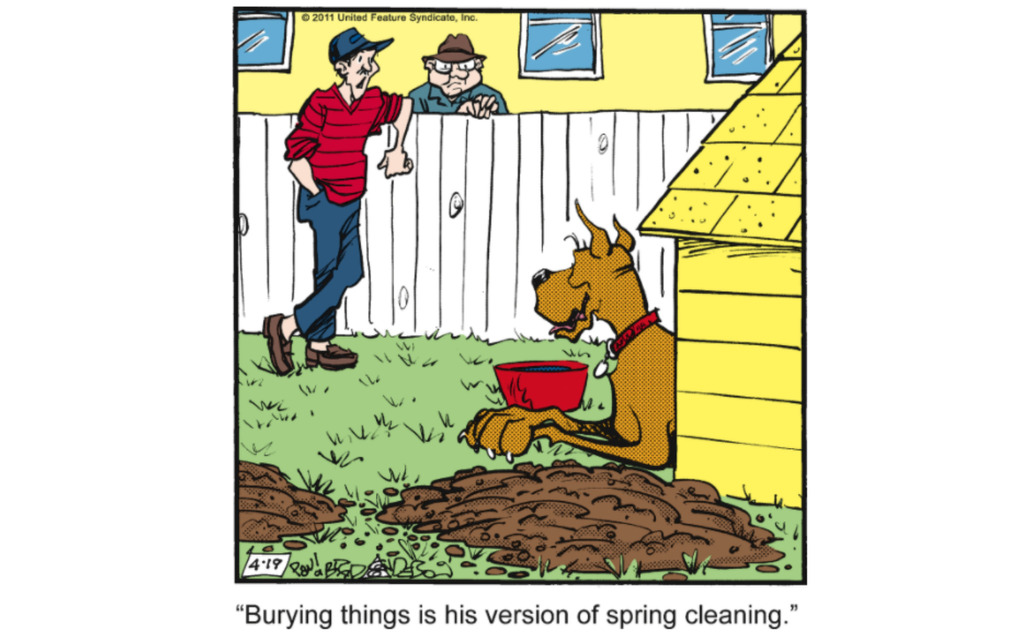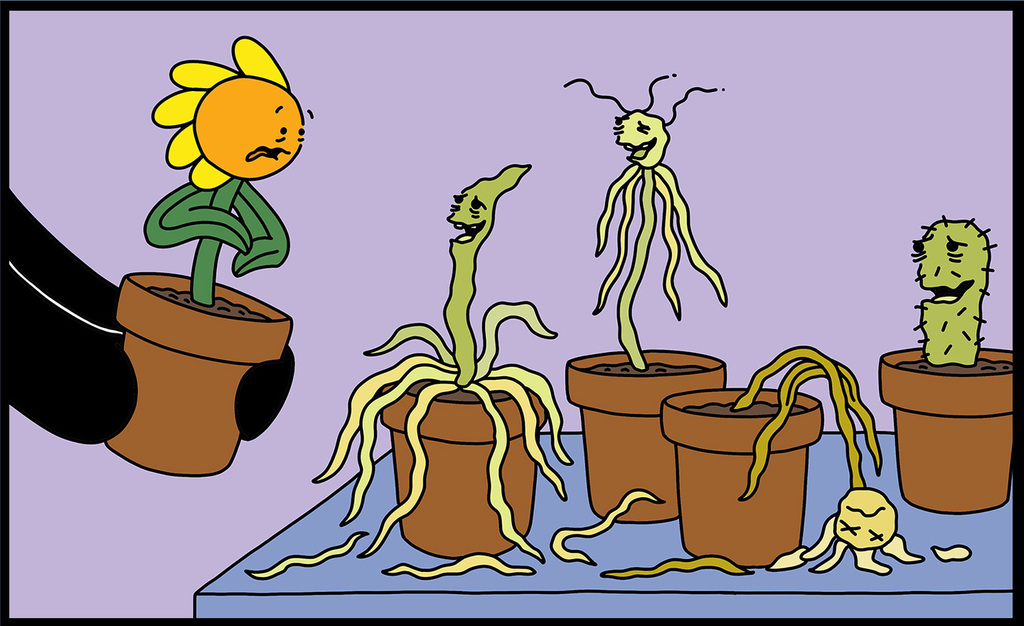Jeff Weigel (Dragon Girl)
by GoComicsThe GoComics "Meet Your Creator" series brings you firsthand insight into the lives and careers of your favorite cartoonists. Each week, we hand over the keys to one of our talented creators, who share their inspirations, achievements, creative processes, studios and more! Read on to hear from this week's featured cartoonist: Jeff Weigel of Dragon Girl
I began drawing comics about the time I learned to read. I can trace the very first comics I read to the spring of 1966 - the height of the Batman TV show craze. I fell for those Silver Age comics like a bowling ball in a black hole. As time went on, I realized I loved the artwork as much as the characters themselves. As credits started to appear in comics, I learned the names of the artists. Their draftsmanship and storytelling ability raised the bar for stories about guys who fight crime in their underwear. Anybody who read comics in those days has the same list of names that inspired them: Jack Kirby, Neal Adams, Nick Cardy, Jim Steranko, Curt Swan, Gene Colan and many more. (These guys taught every generation after them how to draw and tell a story. Modern comics artists owe those giants a debt far beyond the modest page rates they received for their hard work.)
In my teenage years, I absorbed a lot of information about comics and their history. That led me to discover the work of the three fathers of American adventure comics: Milton Caniff (Terry and the Pirates), Alex Raymond (Flash Gordon) and - most influential on me - Hal Foster. It was Foster who created the "big bang" of modern adventure comics illustration in 1929 with the Tarzan Sunday strip. But, his greatest work wouldn't begin until 1937 when Prince Valiant appeared. Foster made Val the greatest show on the comics page for the next 40 years. His work is still the well I go to when I need inspiration.
So, with comics firmly imprinted into my DNA, I spent much of my childhood reading or drawing, trying to teach myself to create comics like those of my heroes. Studying art at college was inevitable, but in 1976, there were no BFA degrees in comics. The closest I could get was the graphic design program at the University of Illinois. There, I learned the craft of design, which became my fallback profession when breaking in to comics proved too tough a nut to crack. Commercial art also seemed like a reasonable compromise when I found out what starting page rates were in the shriveling comic book industry of the late 1970s. I decided to set my comics ambitions aside in exchange for the ability to eat regularly and live indoors.
But shelving my comics ambitions wasn't that easy. Despite my full-time graphic design career - first in New York (two floors above DC Comics' office!), then in Lafayette, Louisiana, and finally in St. Louis, Missouri - comics still pulled me like a magnet. The problem: My timing was always terrible! I sent samples to comics companies during the early 1980s, when eroding distribution channels threatened to bring an end to the industry. In the late '80s and early '90s, direct distribution saved the industry, and independent comic book companies started sprouting like weeds. I tried to jump back in right after the wave crested - the comic book market collapsed and the independent companies that had been so hungry for new talent disappeared almost overnight.
Still, just before the crash, I met Gary Carlson, one of the guiding forces of a comic book anthology called Big Bang Comics. Big Bang had just hooked up with its new publisher, the industry upstart - Image Comics. Big Bang bucked the trend toward gritty, hyper-muscular superheroes. Gary and company were looking for creators dedicated to the kind of stories and art found in the good old Silver Age, and I was a perfect fit!
I did occasional work for Big Bang, becoming one of the main artists for Gary's Ultiman stories. (Ultiman was a Silver Age Superman doppelganger, and my style was heavily influenced by the Man of Steel's best artist of that era, Curt Swan.) More significantly for me, Gary decided the hero I'd created independent of the Big Bang universe would fit well into the anthology. Enter The Sphinx! He's a hero I created as a kinder, gentler counterpoint to the cynical anti-heroes of the day. I went on to draw almost a hundred pages of Sphinx adventures; they all saw print in Big Bang over the next few years. They even earned me a nomination for the comics industry's Russ Manning Award for the Most Promising Newcomer in Comics in 1998. No, I didn't win. (Interesting aside: For a while, my closest claim to fame was that one of my Big Bang Sphinx issues was a prop on the pilot of the Fox sitcom Malcolm in the Middle!) To this day, my Sphinx work is well remembered by Big Bang fans, enough to warrant having all those stories reprinted in a soft-cover collection published by Pulp 2.0 in 2014.
As nice as it was to finally be published, Big Bang did not bring in big bucks. In an attempt to find a more lucrative outlet for all the after-hours I spent at the drawing board (I was still a designer/art director by day), I tried my hand at children's picture books. It seemed natural to create a mash-up of comics and picture books (hey, kids love superheroes, right?), and so Atomic Ace was born.
Atomic Ace is a superhero who saves the world by day and returns to his wife and son and ordinary middle-class home each evening. Ace's work adventures are told in comic book panels that share the page with rhyming text and illustrations depicting his son's daily experience as a typical kid in a typical elementary school-whose dad just happens to be a superhero. Occasionally, the dad's and son's daily activities overlap. Merriment ensues. Atomic Ace was enough of a success that a sequel followed the next year. Published work and royalty checks finally coexisted!
After the success of Atomic Ace, I found an agent who quickly sold my first children's graphic novel to G.P. Putnam's Sons. Thunder From The Sea is a real departure from superheroes: It's an historical adventure of a boy on a British naval ship defending England from Napoleon in 1805. It was critically praised "_ and sold about as well as you'd expect, considering the subject matter. (Read: "Now out of print" .)
Through my agent, I struck up a partnership (and friendship) with children's author and crazy-idea man Mike Spradlin. Mike had sold a novelty book concept to HarperCollins - a book of beloved Christmas carols with the lyrics rewritten about zombies! HarperCollins wanted to buy the book with lots of spot illustrations as part of the package. I was enlisted. It's Beginning to Look a Lot Like Zombies: A Book of Zombie Christmas Carols landed on The New York Times Bestseller List in December of 2009, peaking at No. 16.
Shortly before my work appeared in a NYT bestseller, the great recession struck, and my graphic design career ended. I was laid off from the design firm where I'd been a designer/creative director for 20-plus years. The world had arranged for me to start over. I decided to finally give comics and illustration everything I had.
In the years since, Mike Spradlin and I followed the success of the Christmas zombies with a book of zombie love songs (Every Zombie Eats Somebody Sometime) and one of zombie nursery rhymes (Jack and Jill Went Up to Kill). Plus, we worked together on the kids' picture book, The Monster Alphabet. Even with all these zombies and monsters on my plate, my love for comics was still calling. Plus, I had the urge once again to create a story from my own imagination.
Which leads us to the biggest project I've ever tackled: Dragon Girl.
Honestly, Dragon Girl started out as a very different story of a girl raising dragons like livestock on a farm. When then Andrews McMeel editor Andrea Colvin saw it, she loved the artwork, but thought the story needed some rocket fuel. She pushed and pulled me in directions I hadn't thought of (as good editors will do), and what emerged was a rip-snorting graphic novel adventure published in 2014, which folks are now enjoying, a page per day, on GoComics.
It is no exaggeration to say that Dragon Girl's publication has been the fulfillment of a lifelong dream. As with every freelancer, the future is always an adventure, but I hope there are many more pages with panels and word balloons ahead. My next project is a nonfiction graphic novel explaining the science behind the Large Hadron Collider in CERN, Switzerland. It's a collaboration with science writer Sara Latta, and it should be out from Lerner Books in 2017. In the meantime, I'm continuing Dragon Girl's adventures and blogging on the joys of graphic storytelling for kids on my website. Keep an eye out for me - I'm not done yet. There's more to come!
Read Dragon Girl from the beginning here. Follow Jeff on Twitter here.


